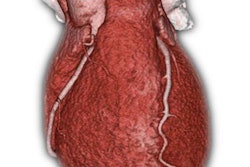A presentation scheduled to take place immediately preceding this one will reveal the high discriminant value of a predication model applied to a National Lung Screening Trial (NLST) dataset. The Brock or PanCan model showed impressive performance when applied to a subset of NLST data, with sensitivity of 85% and specificity in the 90s.
Could it work as well in a controlled setting? The researchers will describe their experiences in this presentation.
"We conducted an observer performance test to compare the accuracy of the model with that of radiologists in a simulated clinical environment," wrote Dr. Heber MacMahon, a professor of radiology at the University of Chicago, in an email to AuntMinnie.com.
The investigators tested the model using both automated and manual feature extraction on 100 NLST cases that included 20 proven cancers and 80 matched benign nodules.
The model worked well -- but not quite as well as experienced radiologists and trainees, who were significantly more accurate in estimating the risk of malignancy in size-matched, screen-detected nodules.
Experienced radiologists performed better than trainees and were less influenced by the model. The session will explain which nodule characteristics informed the human readers.



















